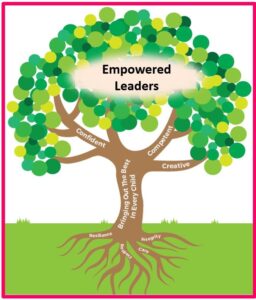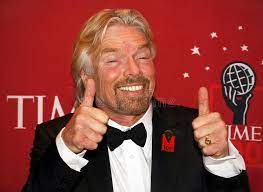In the grand tapestry of life, failures are the threads that add depth and texture to our journeys. Far from being stumbling blocks, they are the stepping stones to growth and triumph. Like a blacksmith refining iron through the relentless heat of the forge, failures have the power to temper our spirits, fortifying us for the challenges that lie ahead. It is in these moments of adversity that we find the raw material for resilience, the beacon that guides us towards ultimate victory.
This journey of embracing failures is not a solitary one; it is a universal narrative shared by the greatest minds and the humblest hearts alike. From the towering achievements of pioneers in science and art to the everyday heroes who persevere against all odds, the common thread is their ability to turn setbacks into stepping stones. In this exploration, we will unravel the profound significance of viewing failures not as defeats, but as invaluable sources of strength.

Table of Contents
Join us on this odyssey, where we will navigate the landscapes of disappointment and rise from their fertile grounds, armed with the resilience to face any challenge. Through stories of triumph and wisdom born of adversity, we will uncover the transformative power that lies within every failure, waiting to be harnessed for our own journey towards victory. So, let us embark on this voyage together, with failures as our guiding stars and resilience as our steadfast ship. Let us explore how embracing failures can serve as a powerful catalyst for building resilience and achieving ultimate success.
The Nature of Failure
Embracing Imperfections in various aspects of Life:
Failure, in its essence, is a teacher cloaked in disappointment. It is not the end of the road, but a detour that beckons us to take a different path. Like a gust of wind that momentarily shifts our course, failure redirects us towards unexpected but valuable destinations.
Personal Context:
In our personal lives, failure often wears the mask of unmet expectations or unfulfilled dreams. It can be the dream job that slipped through our fingers or the relationship that didn’t unfold as we hoped. Yet, these personal setbacks are the chisels that sculpt our character, revealing our strengths and showing us where we have room to grow. Just as a sculptor chips away at a block of marble to unveil a masterpiece, so too does personal failure reveal the inner strengths that lie within us.
Professional Context:
In the realm of work and career, failure may manifest as projects that falter or opportunities that slip away. It’s akin to a ship navigating turbulent waters, where unforeseen waves temporarily slow progress. However, just as a skilled captain learns to navigate storms, professional failure hones our skills and imparts invaluable lessons. It refines our approach, making us better equipped to face future challenges.
Academic Context:
In the pursuit of knowledge, academic failure may arise when we stumble on a difficult subject or fall short of expected grades. This is akin to a mountain climber encountering a steep, rocky slope. It may slow progress, but it also presents an opportunity to learn new techniques and strategies. Failure in academics is not a verdict on intelligence,* but a call to adapt and explore different paths to understanding.
In all these contexts, failure is not a verdict on our worth or capabilities. It is a mirror that reflects our humanity, reminding us that perfection is not the goal. Instead, it offers the chance to grow, adapt, and ultimately, to flourish. Just as a garden blooms more vibrantly after a nourishing rain, so too can we emerge stronger and wiser after embracing failure. It is not an adversary, but a guide, leading us towards greater resilience and eventual victory.
Common Emotional Responses to Failure

In common parlance emotional response to failure is more often, negative than positive, leading to stress, pressure, bitterness and cynicism. However, there are people whose emotional response to failure is positive embedding the failures further in their cause or mission undeterred. Let us take a bird’s -eye view of the two kinds of responses.
Disappointment:
When faced with failure, disappointment often sweeps over us like a sudden rain on a sunny day. It’s a feeling of unmet expectations, like watching a balloon slowly deflate after being filled with anticipation. For instance, imagine a student who worked tirelessly on a project, only to receive a lower grade than expected. The initial rush of disappointment may feel like a heavy weight, but it’s important to remember that disappointment is a natural response to setbacks. It’s a sign that we care deeply about our endeavors.
Frustration:
Frustration is like a persistent itch we can’t quite scratch. It’s the feeling of being held back, like a bird with its wings clipped. For example, think of a writer struggling to find the right words for a story. Each attempt falls short, and frustration mounts. It’s crucial to recognize that frustration is a signal that we’re pushing ourselves, that we’re striving for something greater. With patience and persistence, frustration can transform into determination.
Self-Doubt:
Self-doubt is like a shadow that creeps in, casting doubt on our abilities and worth. It’s akin to a gardener questioning if they have the green thumb needed to tend to their plants. For instance, after a failed presentation at work, self-doubt might whisper, “You’re not cut out for this.” However, it’s vital to remember that self-doubt is a natural response to failure. It’s a moment to pause, reflect, and then challenge those negative thoughts.
Guilt:
Guilt is a heavy cloak we wrap around ourselves, often born from the belief that we’re responsible for the failure. It’s like a painter staring at a canvas, feeling remorseful for a stroke that didn’t quite match the vision. For example, a team member may feel guilty for an oversight that led to a project delay. It’s important to recognize that while accountability is important, carrying excessive guilt can hinder progress. Instead, it’s a call to learn and improve.
Positive responses to Failure
Resilience:
Every time we face and overcome a failure, it’s like adding a brick to the foundation of our inner strength. It’s a testament to our ability to persevere, adapt, and rise above challenges. Just as a mountain weathers countless storms, our inner strength grows with each trial. This newfound resilience becomes an enduring asset, empowering us to face future challenges with confidence and determination.
Surprisingly, resilience can also be an emotional response to failure. It’s like a seed buried in the soil, determined to sprout despite adversity. When faced with a setback, some individuals find an inner fire that refuses to be extinguished. They use failure as a fuel to come back stronger, like a phoenix rising from its own ashes. This response showcases the incredible capacity of the human spirit to not only endure, but to thrive in the face of adversity.
Remember, these emotional responses are natural and part of the human experience. It’s important to acknowledge and process them, using them as stepping stones toward growth and eventual triumph. Through introspection and resilience, we can turn these emotions into sources of strength and motivation.
Introspection:
Introspection is like a compass guiding us through uncharted waters. It’s the opportunity to look inward, examining our actions, motivations, and areas for improvement. For instance, after a setback, taking a moment for introspection allows us to understand what worked, what didn’t, and how we can approach things differently next time. It’s a powerful tool for personal growth and development. It is like a time to Review or Refresh.
Sometimes, a setback serves as a valuable checkpoint in our journey. It’s like a pause button that allows us to review our goals, strategies, and priorities. For instance, a musician may encounter a plateau in their practice. This is an opportunity to refresh their approach, explore new techniques, or revisit foundational skills. It’s a chance to refine our path, ensuring we’re on track to achieve our aspirations.
Adaptation
Adaptation is akin to a tree bending gracefully in the wind, rather than resisting it. It’s the ability to adjust our approach in response to new information or circumstances. Consider a business facing changing market trends. Instead of clinging to outdated strategies, they adapt, finding innovative ways to thrive. Embracing failure as a catalyst for adaptation allows us to stay agile and navigate future challenges with greater ease.
Adaptation is the ability to modify our approach, strategies, or behaviors in response to new information or circumstances. It’s like a ship changing its course to navigate through different waters. For example, a business facing a shift in consumer preferences may adapt their product offerings to meet the evolving demands. Embracing failure as a catalyst for adaptation allows us to stay agile and thrive in dynamic environments.
Flexibility:
Adaptation and flexibility are closely related. They both involve the ability to adjust and respond effectively to changes or challenges.
Flexibility is akin to a rubber band that stretches without breaking. It’s the capacity to bend and adjust to different situations or demands. For instance, a parent might need to alter their plans when unexpected events arise, demonstrating flexibility in managing family responsibilities. Being flexible enables us to handle uncertainty and change with grace and ease.
Open-mindedness:
Open-mindedness is like a door swinging wide, inviting in new perspectives and ideas. It’s the willingness to consider different viewpoints and approaches, even if they challenge our preconceived notions. This kind of response makes a person neutral to failure or success. When faced with failure, being open-minded allows us to explore alternative solutions and learn from diverse experiences. It’s a valuable quality that fosters innovation and growth.
Creativity:
Creativity is the artist’s palette, allowing us to paint new solutions on the canvas of challenges. It’s the ability to generate novel ideas and approaches, even in the face of adversity. Consider a team tasked with solving a complex problem. Through creativity, they might devise unconventional solutions that lead to breakthroughs. Embracing failure can be a springboard for creative thinking, inspiring innovative solutions.
Gratitude for Learning

Failure, though painful, often comes bearing gifts of wisdom and experience. It’s like a mentor providing tough but invaluable lessons. For example, a chef attempting a new recipe might stumble, but in doing so, learns crucial insights about flavor combinations. Recognizing failure as a source of learning fosters a sense of gratitude for the knowledge gained, ultimately propelling us forward.
Tenacity:
Resilience and tenacity are like the roots of a tree, anchoring us firmly even in the fiercest storms. They represent the determination and persistence to continue forward, despite obstacles. Like a marathon runner who pushes through fatigue to reach the finish line, resilience and tenacity enable us to persevere in the face of challenges. They are the driving force that propels us towards becoming successful ultimately.
These common responses highlight the importance of right selection. The choice is ours. Response can be positive or negative or even neutral.
However, the positive response to failure highlights the diverse set of skills and attitudes that empower us to not only overcome setbacks but also thrive in their wake.
By embracing adaptation, flexibility, open-mindedness, creativity, and resilience, we unlock our full potential to navigate life’s challenges with grace and determination.
Resilience as a Crucial Skill For Thriving Beyond Setbacks

Resilience is the phoenix that rises from the ashes of adversity, the inner fortitude that propels us forward when faced with challenges. It’s the capacity to bounce back, to not only weather the storm but to emerge stronger on the other side. Imagine a young sapling swaying in a tempest; it bends, but it does not break. That resilience, that ability to flex and adapt, is what ensures its survival and eventual flourishing.
Life, much like a winding river, often presents us with unexpected twists and turns. In this journey, challenges are the stones that create ripples, testing the strength of our resolve. Just as a tree bends but does not break in the face of a strong wind, so too does resilience allow us to weather the storms of life. It is the inner steel that helps us bounce back from setbacks and emerge stronger, much like a phoenix rising from its own ashes.
Consider the story of the bamboo, a humble plant that stands tall in the face of adversity. When a storm sweeps through the forest, the oak tree may snap, unable to yield to the gale. But the bamboo, with its flexibility and inner strength, bends gracefully, allowing the wind to pass. Once the storm subsides, it returns to its upright position, unbroken and undeterred. Similarly, resilience enables us to flex, adapt, and ultimately, stand tall once again, no matter how fierce the challenges we face.
In personal growth, resilience serves as the cornerstone. It’s the cornerstone that lays the foundation for self-improvement, fostering a mindset of perseverance and strength. Consider the story of J.K. Rowling, who faced countless rejections before Harry Potter found its way into the hearts of readers worldwide. Her resilience in the face of adversity transformed her from an unknown writer to an international literary sensation.
In the world of entrepreneurship, the tale of Elon Musk is a shining example. Musk’s ventures, from PayPal to Tesla and SpaceX, were not without their share of setbacks and near-failures. Yet, his unyielding resilience and unwavering belief in his vision propelled him to become one of the most influential figures in modern technology and space exploration.
On a more personal note, Oprah Winfrey’s journey from a challenging upbringing to becoming a media mogul is a testament to the power of resilience. She faced numerous obstacles, including a turbulent childhood and professional setbacks. However, her resilience not only allowed her to overcome these challenges but also transformed her into a beacon of inspiration for millions around the world.
These contemporary examples highlight how resilience is not just a trait possessed by a select few, but a skill that can be cultivated and honed. It’s the ability to confront failure, learn from it, and use it as a springboard for growth. Resilience empowers individuals to turn setbacks into stepping stones, ultimately leading them towards unparalleled success.
In our own lives, cultivating resilience means recognizing that setbacks are not roadblocks, but detours guiding us towards greater heights. It means understanding that failure is not a verdict on our abilities, but a stepping stone towards personal growth and eventual victory. By embracing resilience, we harness the power to navigate challenges with grace and emerge stronger on the other side.
Approaches for Growth For
Transforming Failure into Resilience
A. Acceptance and Reflection:
In the dance of life, acceptance is the partner that allows us to move forward gracefully. It’s the acknowledgement that, at times, we will stumble, but it doesn’t define our entire journey. Like a hiker recognizing a challenging terrain, acceptance paves the way for progress.
Acknowledging the Reality of Failure:
Admitting failure can be akin to standing in a rainstorm, letting the drops fall freely. It’s about facing the truth, without shields or excuses. For instance, a business venture that didn’t reach its intended heights requires the entrepreneur to acknowledge that it didn’t go as planned. This acknowledgment is the first step towards transforming failure into resilience.
Reflecting on the Lessons Learned and Areas for Improvement:
Reflection is the mirror that reveals the hidden gems within our failures. It’s like a gardener carefully tending to a patch of soil, analyzing which seeds thrived and which needed more attention. When faced with failure, taking the time to reflect allows us to extract invaluable lessons. For example, a student who didn’t perform as well as expected might reflect on their study habits, identifying areas for improvement.
This process of acceptance and reflection is not about dwelling in the past, but about gleaning wisdom from it. It’s about turning the spotlight onto our experiences, understanding what went awry, and uncovering the seeds of resilience that lie within. Just as a sculptor studies a flawed piece to refine their technique, so too does this approach allow us to shape our path towards greater resilience and eventual victory.
B. Building a Growth Mindset: Nurturing the Seeds of Resilience
A growth mindset is the fertile soil in which resilience takes root and flourishes. It’s the belief that abilities and intelligence can be developed through dedication and hard work. Picture a gardener who tends to a garden, knowing that with care and effort, every plant can thrive. Similarly, with a growth mindset, we view setbacks not as limitations, but as opportunities for growth and learning.
Consider the example of Thomas Edison, whose countless attempts to invent the electric light bulb were met with failure after failure. He possessed a relentless growth mindset, seeing each setback as a step closer to success. His famous words, “I have not failed. I’ve just found 10,000 ways that won’t work,” exemplify this mindset. Through his unwavering belief in his ability to learn and improve, he ultimately achieved his groundbreaking invention.
Cultivating a Belief in One’s Ability to Improve and Learn from Mistakes
Cultivating a growth mindset is akin to tending to a garden, ensuring each plant receives the care it needs to thrive. It’s about fostering a belief in our own potential for growth and development. When faced with setbacks, this mindset encourages us to see them not as final judgments, but as opportunities to refine our skills and understanding.
Imagine a student who receives a lower grade than expected on a challenging exam. With a growth mindset, they don’t view it as a measure of their intelligence, but rather as a signal to adjust their study strategies and seek additional help. They believe in their capacity to learn and improve, turning the setback into a catalyst for progress.
In essence, building a growth mindset is about recognizing that our abilities are not fixed, but malleable. It’s about understanding that with dedication, effort, and a belief in our own potential, we can transform setbacks into stepping stones towards greater resilience and eventual victory. Just as a gardener tends to their plants with care and patience, so too can we nurture our own growth mindset, allowing resilience to flourish and thrive.
C. Seeking Support and Guidance: Navigating with a Guiding Star

In the vast sea of challenges, seeking support and guidance is like navigating with a guiding star. It’s the recognition that we don’t have to journey alone, but can lean on the wisdom and experience of others. Picture a sailor consulting a seasoned captain for advice on stormy waters. Similarly, seeking support is a beacon of strength, not a sign of weakness.
Leveraging the Wisdom and Advice of Mentors, Peers, or Support Networks
Imagine a traveler in an unfamiliar land, seeking directions from locals who know the terrain. In the face of adversity, seeking support means turning to those who have walked similar paths. It’s about leveraging the collective wisdom of mentors who offer guidance, peers who provide empathy, and support networks that provide a safety net.
For instance, a budding entrepreneur facing a business setback might seek counsel from a seasoned mentor who has weathered similar storms. This mentor can offer invaluable insights and strategies, illuminating a path forward. Additionally, peers who have faced similar challenges can provide empathetic understanding and share their own experiences, creating a sense of camaraderie.
Recognizing that Seeking Help is a Sign of Strength, not Weakness:

Acknowledging the need for support is akin to a knight donning armor before a great battle. It’s not a sign of vulnerability, but a display of readiness and strength. Just as a wise general seeks advice from trusted advisors, recognizing the value of seeking help shows a profound understanding of one’s own limitations and a willingness to grow.
Consider an athlete training for a competition. They enlist the expertise of coaches and trainers to enhance their performance. This act of seeking professional guidance is not a testament to their inadequacy, but a declaration of their commitment to excellence. It is an act of strength, a recognition that growth and success are not solitary endeavors.
In essence, seeking support and guidance is a beacon that illuminates our path through challenges. It’s a reminder that we’re not alone in our journey, and that there are guiding stars to lead the way. Just as a sailor trusts the North Star to guide them home, so too can we trust in the wisdom and support of mentors, peers, and networks to navigate towards greater resilience and eventual triumph.
D.Navigating with a Clear Map For Setting Realistic Goals* and Expectations

Setting realistic goals and expectations is like charting a course with a clear map. It’s about choosing a path that aligns with our capabilities and the terrain we’re traversing. Imagine a hiker planning a route through a rugged mountain range, taking into account their fitness level and the challenges ahead. Similarly, setting realistic goals ensures we embark on a journey that is both attainable and fulfilling.
Avoiding Unrealistic or Perfectionistic Standards:
Picture an artist sketching a masterpiece. While they strive for excellence, demanding every stroke to be flawless can lead to frustration and disappointment. Similarly, setting realistic goals means acknowledging our limitations and avoiding the pursuit of unattainable perfection. It’s about understanding that progress is often a series of imperfect steps towards a greater vision.
For example, a student aiming for academic success may set a goal to consistently dedicate focused study time each day, rather than aiming for perfection in every assignment. This realistic approach acknowledges that learning is a process, and each effort contributes to overall growth.
Establishing Achievable Milestones and Celebrating Small Victories:

Setting achievable milestones is like marking waypoints on a long and challenging journey. It allows us to measure progress and stay motivated. Consider a marathon runner who breaks down the race into manageable segments. Celebrating small victories along the way provides a boost of encouragement and affirms our progress.
For instance, in a professional context, a project manager may set interim deadlines for different phases of a project. Achieving each milestone becomes a cause for celebration, reinforcing the team’s sense of accomplishment and momentum.
In essence, setting realistic goals and expectations is about choosing a path that allows us to move forward steadily, with confidence and determination. It’s like building a bridge across a wide river, ensuring each step is securely placed before moving on. By avoiding the trap of unrealistic standards and celebrating small victories, we pave the way for greater resilience and eventual triumph in our endeavors.
The Role Models of Perseverance who Made Triumph Through Tenacity
In the annals of history, perseverance stands as the unsung hero, a force that propels individuals through the darkest of tunnels towards the light of success. It’s the unyielding spirit that refuses to be extinguished by setbacks, much like a flame that continues to burn in a storm. Throughout time, there have been remarkable figures who exemplified the power of persistence in the face of adversity, demonstrating that failure is not the end, but a stepping stone towards victory.
Abraham Lincoln:
Abraham Lincoln, the 16th President of the United States, is a beacon of perseverance. His journey was marked by numerous failures and defeats. He lost multiple elections, experienced business setbacks, and faced personal tragedies. Yet, his resilience and unwavering commitment to his principles eventually led him to the highest office in the land. Lincoln’s enduring spirit in the face of adversity remains an inspiration to generations.
Thomas Edison:
Thomas Edison, the renowned inventor, is often credited with saying, “I have not failed. I’ve just found 10,000 ways that won’t work.” Edison’s relentless pursuit of innovation led him through countless experiments and setbacks. His determination to create a functional light bulb, despite numerous failures, ultimately revolutionized the world of technology and illumination. Edison’s story is a testament to the power of tenacity in the face of repeated failures.
Walt Disney:
Walt Disney, the visionary creator of the Disney empire, faced numerous rejections and setbacks before achieving monumental success. Early in his career, he was told he lacked creativity and was even fired from a newspaper for lacking imagination. However, Disney’s unwavering belief in his dreams and his refusal to succumb to discouragement led to the creation of one of the most beloved entertainment empires in the world.
Vincent van Gogh:
The story of Vincent van Gogh, the iconic painter, is one of perseverance in the face of adversity. Van Gogh’s works were largely unappreciated during his lifetime, and he struggled with poverty and mental health challenges. Despite facing rejection and hardship, he continued to create, producing some of the most celebrated and valuable works of art in history. Van Gogh’s dedication to his craft, even in the face of immense challenges, is a testament to the transformative power of perseverance.
These luminaries from the past serve as beacons of inspiration, illuminating the path of perseverance through adversity. Their stories remind us that setbacks are not roadblocks, but opportunities for growth and eventual triumph. By embracing failures and persisting in the face of challenges, we too can harness the extraordinary power of perseverance on our journey towards resilience and ultimate victory.
Harnessing Failure for Personal Growth By Nurturing the Seeds of Adaptability

In the garden of personal growth, failures are not weeds to be discarded, but seeds that, when nurtured, blossom into the vibrant flowers of adaptability. They are the catalysts that stimulate our minds, encouraging us to think outside the box and find innovative solutions. Like a river that shapes the landscape over time, failures sculpt us, urging us to adapt and refine our strategies based on the lessons we’ve learned.
A. Developing Adaptability:
How Failures Can Stimulate Adaptability and Creative Problem-Solving:
Imagine a puzzle with pieces that don’t quite fit. Failure presents us with a similar challenge, urging us to find new ways to assemble the pieces. It sparks creativity, encouraging us to think beyond conventional solutions. For instance, a business facing a downturn may need to adapt its strategies, exploring new markets or innovative approaches.
Consider the story of Netflix. Initially, they operated as a DVD rental-by-mail service. However, as streaming technology emerged, they faced the possibility of obsolescence. Instead of clinging to their original model, they adapted, becoming pioneers in the streaming industry. This adaptability not only saved the company but transformed it into an entertainment powerhouse.
Adapting Strategies Based on Past Experiences:
Failure is like a map that reveals uncharted territories. Each setback provides valuable data on what works and what doesn’t. Just as a seasoned traveler adjusts their route based on past journeys, so too do we refine our strategies based on the lessons of failure. For example, an athlete recovering from an injury might adapt their training regimen to prevent future setbacks.
In the world of technology, the evolution of the smartphone is a prime example of adapting based on past experiences. Early models faced challenges and limitations. However, with each iteration, manufacturers learned from failures and adapted, leading to the sleek, powerful devices we have today. This adaptability to user feedback and technological advancements propelled the industry forward.
In essence, developing adaptability in the face of failure is like honing a craftsman’s tool, ensuring it remains sharp and effective. It’s about using setbacks as opportunities to innovate and refine our approach. By viewing failure not as a roadblock, but as a call to adapt and grow, we harness its transformative power for personal growth and eventual triumph. Just as a tree sways in the wind, so too can we bend and adapt, ultimately standing tall in the face of adversity.
B. Fostering Emotional Resilience By Nurturing the Heart’s Armor
In the realm of personal growth, emotional resilience is the armor that shields us from the arrows of setbacks. It’s the ability to not only weather the storm of emotions, but to harness them for strength and clarity. Like a blacksmith forging steel, we cultivate emotional intelligence and regulation, steering clear of self-destructive behaviors and negative thought patterns.
Cultivating Emotional Intelligence and Regulation in Response to Setbacks:
Imagine a conductor leading an orchestra through a complex piece of music. In the face of failure, our emotions can be similarly intricate and dynamic. Cultivating emotional intelligence means understanding and managing these emotions, turning them into a symphony of strength. For example, when faced with a professional setback, recognizing feelings of disappointment or frustration allows us to respond with clarity and purpose, rather than being swept away by them.
Consider the story of Nelson Mandela, who endured 27 years of imprisonment. His ability to channel his anger and frustration into a disciplined pursuit of justice exemplifies emotional resilience. He cultivated emotional intelligence, using his experiences to fuel his determination to create positive change. Mandela’s ability to navigate adversity with grace and strength is a testament to the power of emotional resilience.
Avoiding Self-Destructive Behaviors and Negative Thought Patterns:
Failure can be like a turbulent sea, threatening to drown us in self-doubt and destructive behaviors. Avoiding this perilous undertow requires vigilance and self-awareness. It means recognizing negative thought patterns and behaviors that can exacerbate our challenges. For instance, when faced with a personal setback, avoiding the trap of harsh self-criticism allows us to maintain a healthy perspective and focus on constructive solutions.
Consider the example of J.K. Rowling, who faced personal and professional struggles before achieving immense success. During difficult times, she acknowledged her own battles with depression and sought professional help. By avoiding self-destructive patterns and seeking support, she was able to overcome adversity and continue her journey towards triumph.
In essence, fostering emotional resilience is like tending to the heart’s garden, ensuring it remains a sanctuary of strength and clarity. It’s about harnessing the power of our emotions, rather than being overwhelmed by them. By cultivating emotional intelligence and avoiding destructive patterns, we build a foundation of resilience that allows us to navigate setbacks with grace and determination. Just as a lighthouse guides ships safely through rocky waters, so too does emotional resilience illuminate our path towards ultimate victory.
Conclusion: Embracing Failures as the Pathway to Triumph

In the symphony of life, failures are not discordant notes to be silenced, but integral chords that compose the melody of our journey. Through the pages of history and the experiences of countless individuals, we’ve witnessed the extraordinary power of turning setbacks into opportunities for growth and triumph.
Embracing failures is akin to a phoenix rising from the ashes, a testament to the indomitable human spirit. It’s the ability to see beyond the immediate sting of defeat, and recognize that within it lies the potential for transformation. Like a sculptor shaping a masterpiece, each setback molds us, refining our character and fortifying our resolve.
As we’ve explored the stories of pioneers like Henry Ford, Oprah Winfrey, Apple Inc., and J.K. Rowling, we’re reminded that adversity is not a roadblock, but a crossroads. It’s a choice to either falter or forge ahead. Through their unwavering determination, these individuals turned failures into springboards, birthing innovations, empires, and literary legacies.
Let us remember that setbacks are not the end of the road, but stepping stones towards ultimate victory and resilience. They are the challenges that sharpen our swords, preparing us for the battles ahead. It’s in those moments of struggle that we discover our true mettle, our capacity to endure, adapt, and ultimately triumph.
So, as you navigate your own journey, remember this: every setback is a call to action, an opportunity for growth, and a doorway to a stronger, more resilient you. Embrace the failures, for within them lies the seeds of your triumphs. Let them be the wind in your sails, propelling you towards a future filled with resilience, strength, and ultimate victory. END
FAQS
Q1. Why is embracing failure important for success?
Embracing failure is important because it provides valuable lessons, fosters resilience, and often leads to innovation and personal growth
2. How can failure be considered a stepping stone to success?
Failure provides opportunities for learning and improvement. By analyzing and understanding failures, individuals can refine their strategies and increase their chances of success in future endeavors.
Q3. Isn't failure a negative experience? Why should I embrace it?
While failure can be challenging, viewing it as a learning opportunity rather than a negative experience can transform your mindset. Embracing failure allows you to extract lessons and insights that can contribute to your long-term success
Q4. How can I overcome the fear of failure?
Overcoming the fear of failure involves reframing your mindset, focusing on the process rather than the outcome, setting realistic expectations, and understanding that failure is a natural part of any journey.
Q5. Are there any famous examples of individuals who embraced failure on their path to success?
Yes, many successful individuals, such as Thomas Edison, Steve Jobs, and J.K. Rowling, faced numerous failures before achieving remarkable success. Their stories highlight the importance of persistence and resilience.Accordion Content
Q6. Can failure be avoided entirely?
It’s unlikely to avoid failure completely. However, you can minimize its impact by learning from mistakes, adapting your approach, and maintaining a positive attitude.
Q7. How do I turn failure into a positive force in my life?
Focus on the lessons learned, use failure as motivation to improve, and remember that setbacks are temporary. Use failure as fuel for personal and professional growth.
Q8. Is there a difference between productive and unproductive failure?
Absolutely. Productive failure involves learning and growth, while unproductive failure occurs when lessons are ignored, and mistakes are repeated. Embracing failure involves turning setbacks into opportunities for improvement.
Book consultation call https://calendly.com/vinitavhr/30min
Discern,learn, implement & Succeed
Are you in a dilemma?
Time to stop it. Get clarity and purpose. Book a free consultation
Click Here


Admin Really enjoyed your blog!
Thank you for your sharing. I am worried that I lack creative ideas. It is your article that makes me full of hope. Thank you. But, I have a question, can you help me? https://accounts.binance.com
useful site